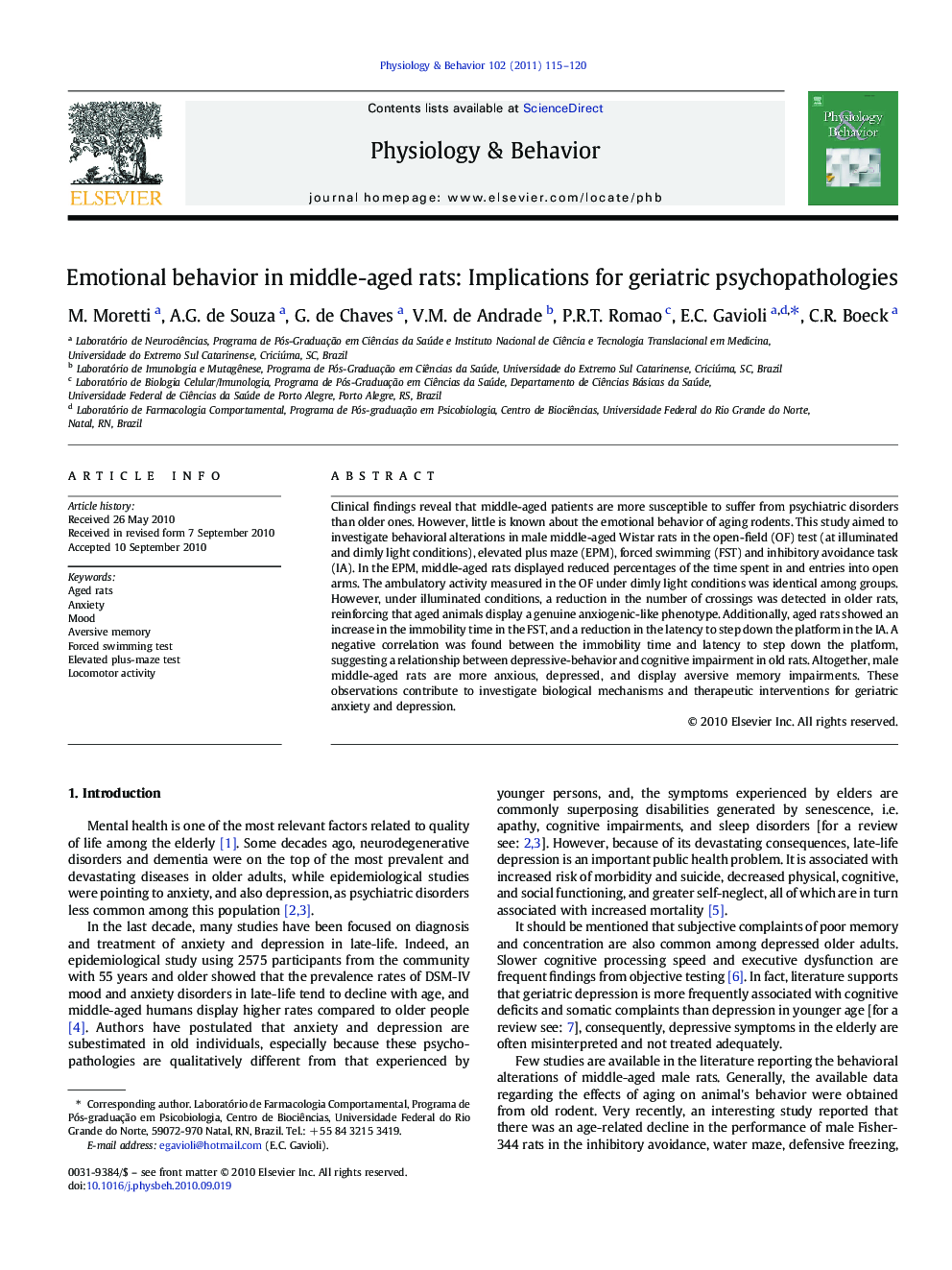| Article ID | Journal | Published Year | Pages | File Type |
|---|---|---|---|---|
| 2844881 | Physiology & Behavior | 2011 | 6 Pages |
Clinical findings reveal that middle-aged patients are more susceptible to suffer from psychiatric disorders than older ones. However, little is known about the emotional behavior of aging rodents. This study aimed to investigate behavioral alterations in male middle-aged Wistar rats in the open-field (OF) test (at illuminated and dimly light conditions), elevated plus maze (EPM), forced swimming (FST) and inhibitory avoidance task (IA). In the EPM, middle-aged rats displayed reduced percentages of the time spent in and entries into open arms. The ambulatory activity measured in the OF under dimly light conditions was identical among groups. However, under illuminated conditions, a reduction in the number of crossings was detected in older rats, reinforcing that aged animals display a genuine anxiogenic-like phenotype. Additionally, aged rats showed an increase in the immobility time in the FST, and a reduction in the latency to step down the platform in the IA. A negative correlation was found between the immobility time and latency to step down the platform, suggesting a relationship between depressive-behavior and cognitive impairment in old rats. Altogether, male middle-aged rats are more anxious, depressed, and display aversive memory impairments. These observations contribute to investigate biological mechanisms and therapeutic interventions for geriatric anxiety and depression.
Research Highlights► Middle-aged male Wistar rats display anxiogenic- and depressant-like phenotype. ► Middle-aged rats showed aversive memory deficits compared to younger animals.” ► There is a correlation between depressive-behavior and cognitive deficits in aged rats. ► Our data contribute to investigate underlying mechanisms of geriatric psychopathologies.
